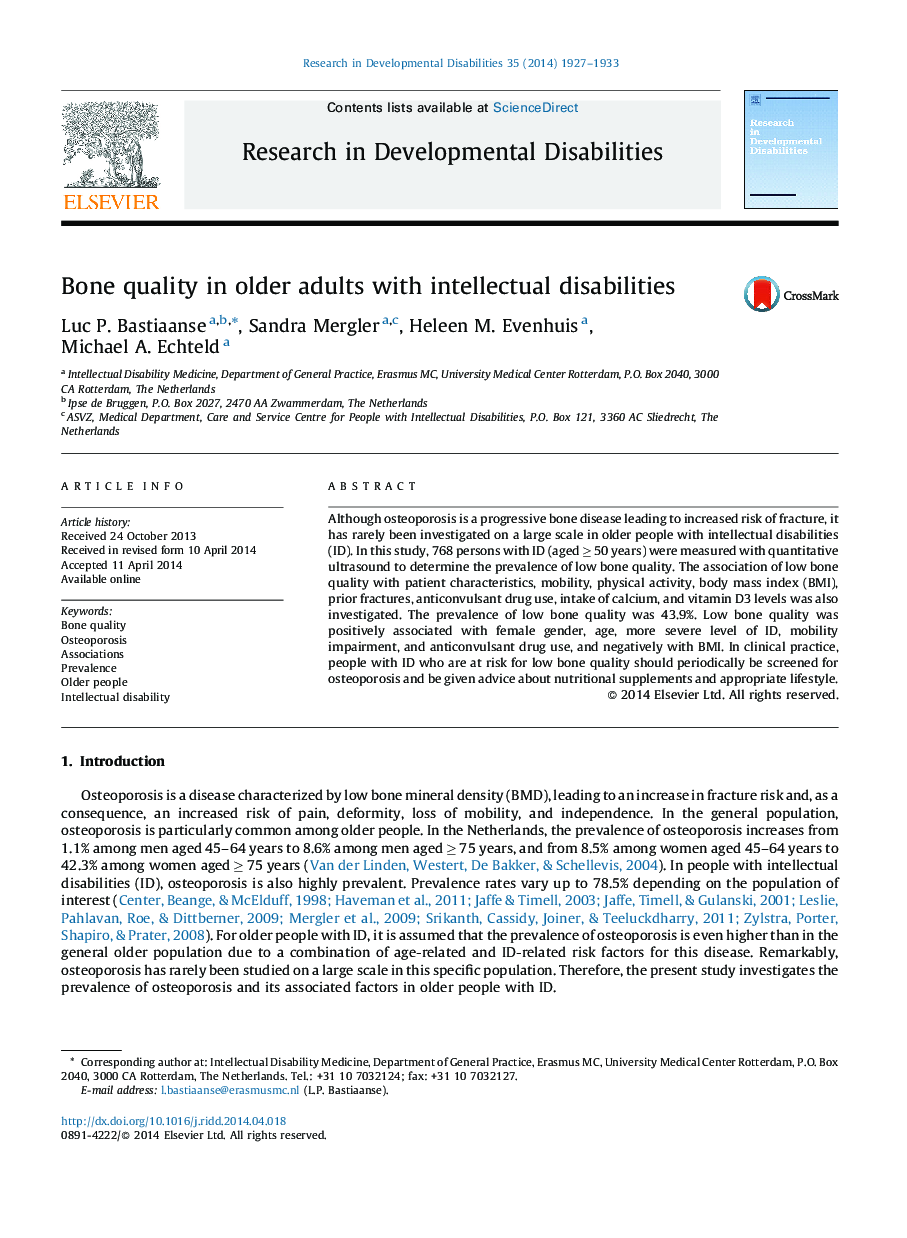| Article ID | Journal | Published Year | Pages | File Type |
|---|---|---|---|---|
| 10317555 | Research in Developmental Disabilities | 2014 | 7 Pages |
Abstract
Although osteoporosis is a progressive bone disease leading to increased risk of fracture, it has rarely been investigated on a large scale in older people with intellectual disabilities (ID). In this study, 768 persons with ID (aged â¥Â 50 years) were measured with quantitative ultrasound to determine the prevalence of low bone quality. The association of low bone quality with patient characteristics, mobility, physical activity, body mass index (BMI), prior fractures, anticonvulsant drug use, intake of calcium, and vitamin D3 levels was also investigated. The prevalence of low bone quality was 43.9%. Low bone quality was positively associated with female gender, age, more severe level of ID, mobility impairment, and anticonvulsant drug use, and negatively with BMI. In clinical practice, people with ID who are at risk for low bone quality should periodically be screened for osteoporosis and be given advice about nutritional supplements and appropriate lifestyle.
Related Topics
Life Sciences
Neuroscience
Behavioral Neuroscience
Authors
Luc P. Bastiaanse, Sandra Mergler, Heleen M. Evenhuis, Michael A. Echteld,
